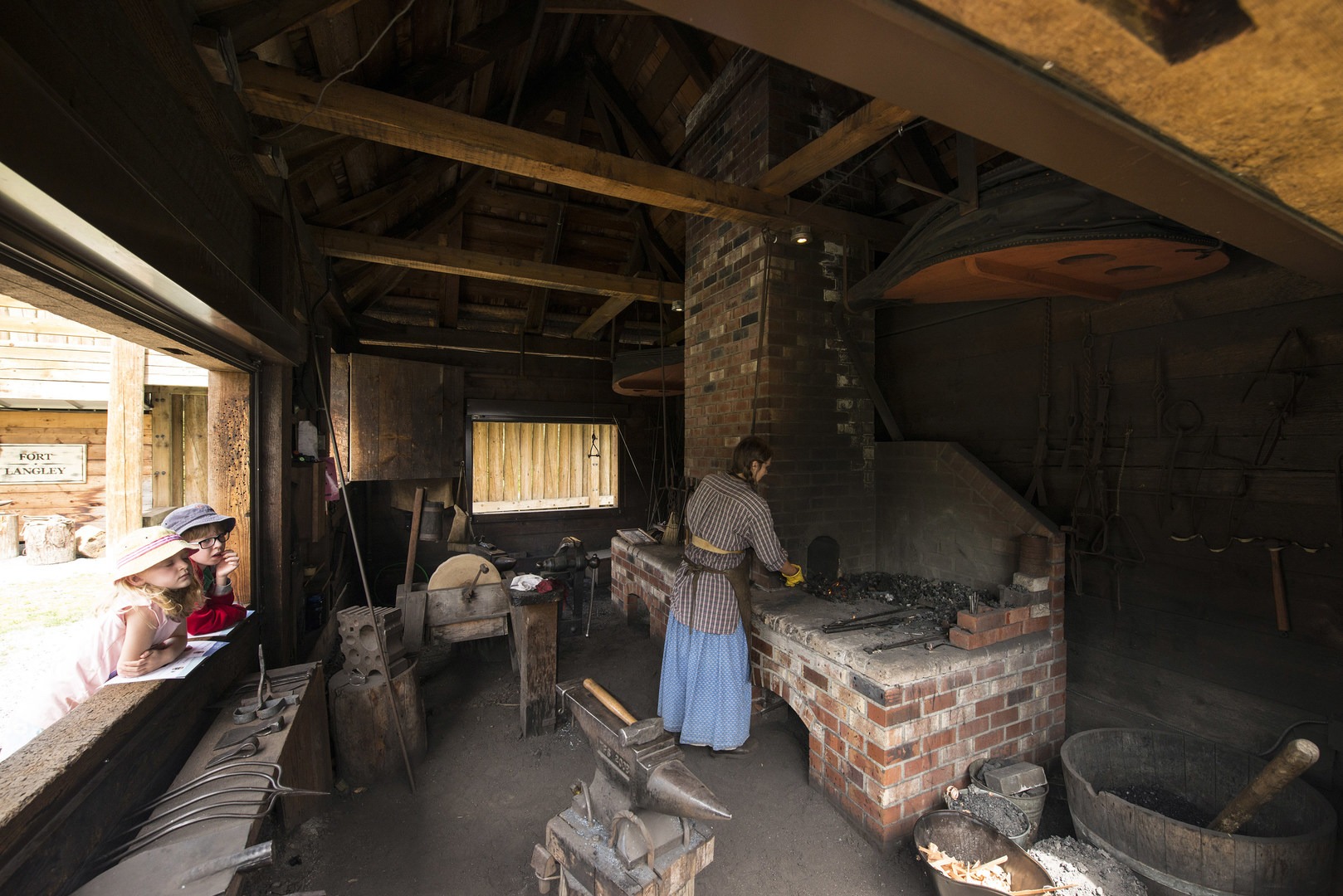You are here
During the 18th and 19th century, ownership claims to much of the land west of the Mississippi River were constantly disputed. The U.S. and British Treaty of 1818 formally defined a north-south boundary along the 49th parallel all the way from Minnesota to the "Stony Mountains" (Rocky Mountains). The great expanse of land west of the Rockies would not have a defined boundary, however; it would be shared for common interests and use. Americans at the time referred to the land as the Oregon Country, and the British called it the Columbia District of the Hudson's Bay Company.
At the time, primary exports for the Hudson's Bay Company were shipped from Fort Gorge (current day Astoria, Oregon) on the south side of the Columbia River. George Simpson, the company's chief administrator, was unsettled by the uncertainty of an undefined U.S. and British boundary west of the Rockies, so he needed an outpost on the north shore of the river should the southern shore (including Fort Gorge) be ceded to the U.S..
By 1824 Simpson created Fort Vancouver near the confluence of the Columbia and Willamette rivers, but he always envisioned that Fort Vancouver would be a secondary outpost to a larger post on the Fraser River. By 1827 the Hudson's Bay Company began construction of Fort Langley near the confluence of the Salmon River. In 1833 Fort Nisqually (a mid-point between the two other forts) was constructed on the Puget Sound, creating a triad of economic and cultural influence for the region. The forts enabled the Hudson's Bay Company to completely dominate trapping and trade in the Northwest for the first half of the 19th century.
Individually however, Fort Langley never fully took off as a fur trading post to the extent of Fort Vancouver. Traders along the coast kept prices high, the Fraser River was less navigable than the Columbia, and First Nations people along the Fraser River didn't take to hunting and trapping. The fort's most bountiful years for fur trade were 1829 to 1831, but soon thereafter the company shifted the fort's focus to agricultural production and salmon harvesting.
The American's "54°40’ or Fight", The Birth of British Columbia + The Demise of Fort Langley
Tensions between the parties sharing the Oregon Country/Columbia District of the Hudson's Bay Company were continuous. Under the Polk administration, the U.S. pushed for a more northerly boundary near the 54th parallel (think "54°40’ or fight"). The Spanish-American War broke out at the same time, however, and in an effort to avoid simultaneous wars, the U.S. agreed to the Oregon Treaty of 1846. In the treaty, the U.S. settled for extending the country's boundary along the 49th parallel all the way to the coast. The treaty created a new official name for the U.S. land, the Oregon Territory, and the Canadian land officially became the Crown Colony of British Columbia in 1858.
Fort Vancouver and Fort Nisqually, run by a British company in the new U.S. Oregon Territory, were stranded. Fort Vancouver became a U.S. army outpost, and in a climate of diminishing fur trade profits and tax disputes, Fort Nisqually was eventually closed in 1869. Fort Langley, although in British Columbia, was not seen as being in a militarily strategic or defensible location, and hence it was unsuitable to be the capital of the new colony. Under recommendation by Colonel Moody, New Westminster became the new capital, but then by 1866 when the Colony of British Columbia and Colony of Vancouver Island were united, the capital was moved to Victoria. Eventually, by 1886 Fort Langley was no longer used as a Hudson's Bay Company post.
National Historic Site
In 1923 Fort Langley was officially designated a National Historic Site, and the site has developed into a 8.5-hectare living history museum with key contributions from the Native Sons and Daughters of British Columbia and Parks Canada. While most of the grounds are a replica of original structures, the Storehouse, built in 1931, remains the oldest non-native structure in British Columbia.
The historic site is open seven days a week, year round from 10 a.m. to 5 p.m. and is only closed for Christmas (December 25 and 26) and New Year's Day. Events and interpretive tours are also held year-round. Learn more at Parks Canada's events page or by calling 604.513.4777.
Logistics + Planning
Current Weather: Powered by Dark Sky






























Comments
Sign In and share them.